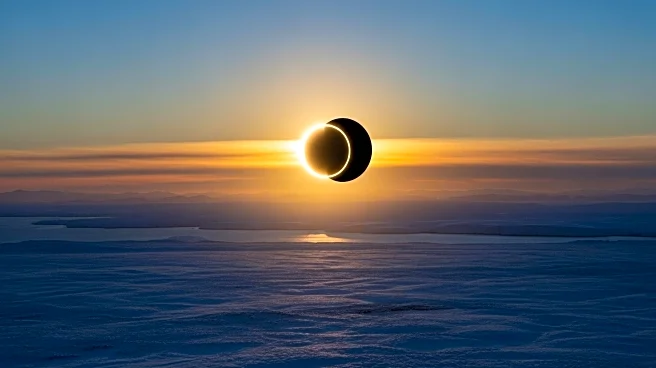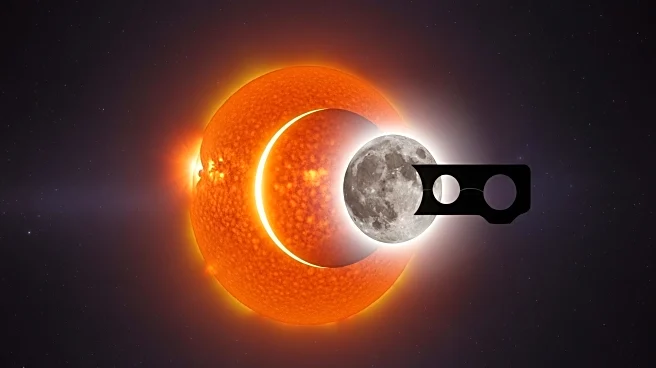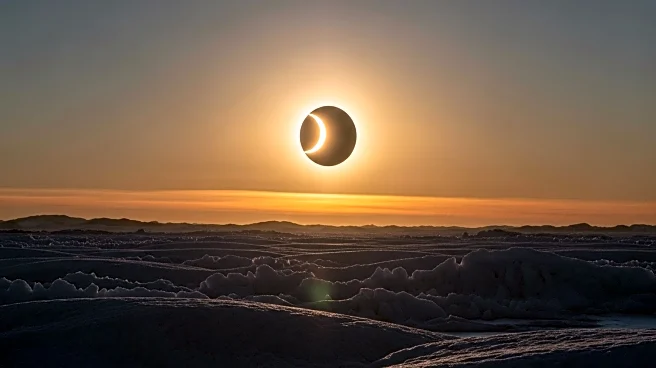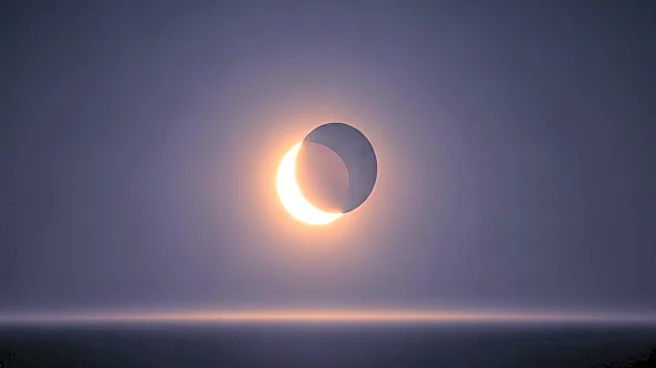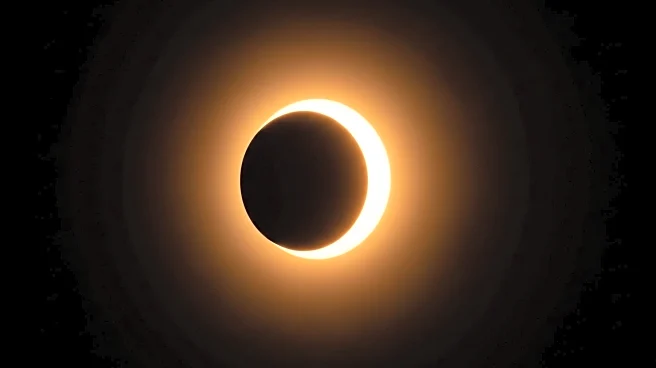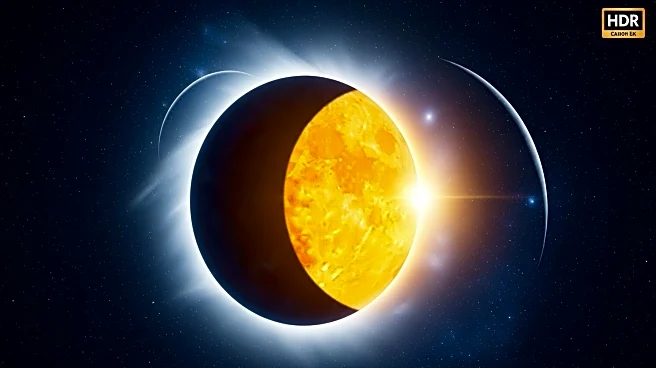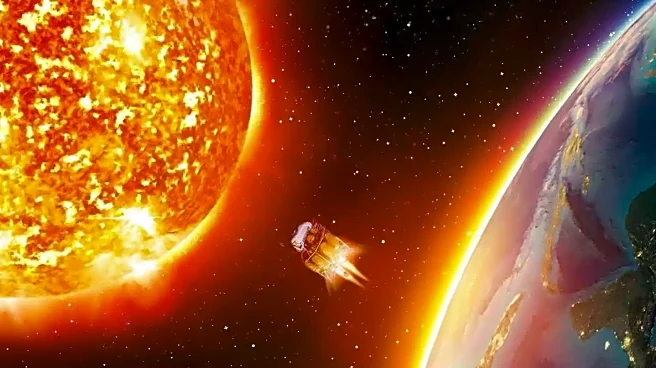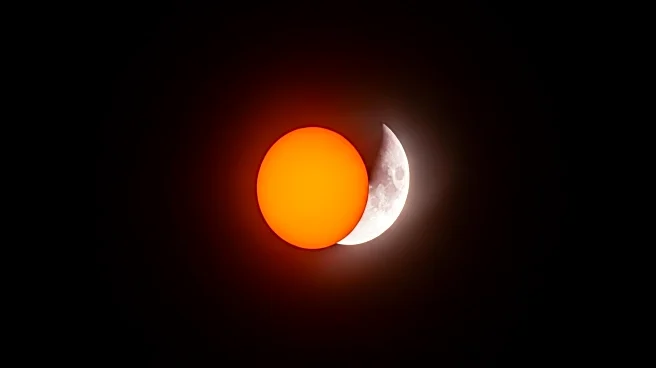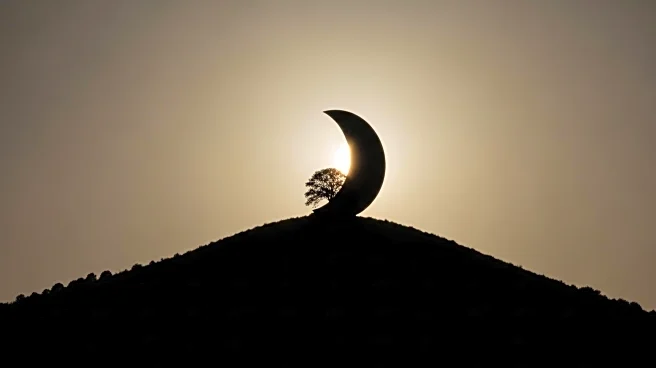What's Happening?
Skywatchers around the globe are preparing for the final solar eclipse of the year, a partial eclipse set to occur on Sunday, September 21, 2025. This celestial event will be visible from select regions, including Antarctica, Australia, and New Zealand, offering a striking view for those in its path. The eclipse will begin at 1:29 p.m. EDT and end at 5:53 p.m. EDT, with the maximum phase expected at 3:41 p.m. EDT. However, it will not be visible in India, as the event will occur after sunset. Astronomy enthusiasts in non-visible regions can follow the phenomenon via online live streams. This event concludes the year's eclipse calendar, with the next solar eclipse scheduled for February 17, 2026.
Why It's Important?
Solar eclipses are significant astronomical events that attract global attention due to their rarity and the unique viewing experience they offer. This partial eclipse provides an opportunity for scientific observation and public engagement with astronomy. The event's timing, just before the autumnal equinox, adds to its significance, marking a transition in the Earth's position relative to the Sun. While the eclipse is not visible in India, it highlights the interconnectedness of global astronomical phenomena and the shared interest in celestial events. The emphasis on safety during viewing underscores the importance of public education in astronomy.
What's Next?
The next solar eclipse is scheduled for February 17, 2026, an annular eclipse visible from Antarctica, with partial visibility in Africa, South America, and various oceans. Later in August 2026, a total solar eclipse will occur, offering an even more dramatic spectacle. These upcoming events will continue to engage the global community in astronomical observation and education, fostering interest and understanding of celestial phenomena.

